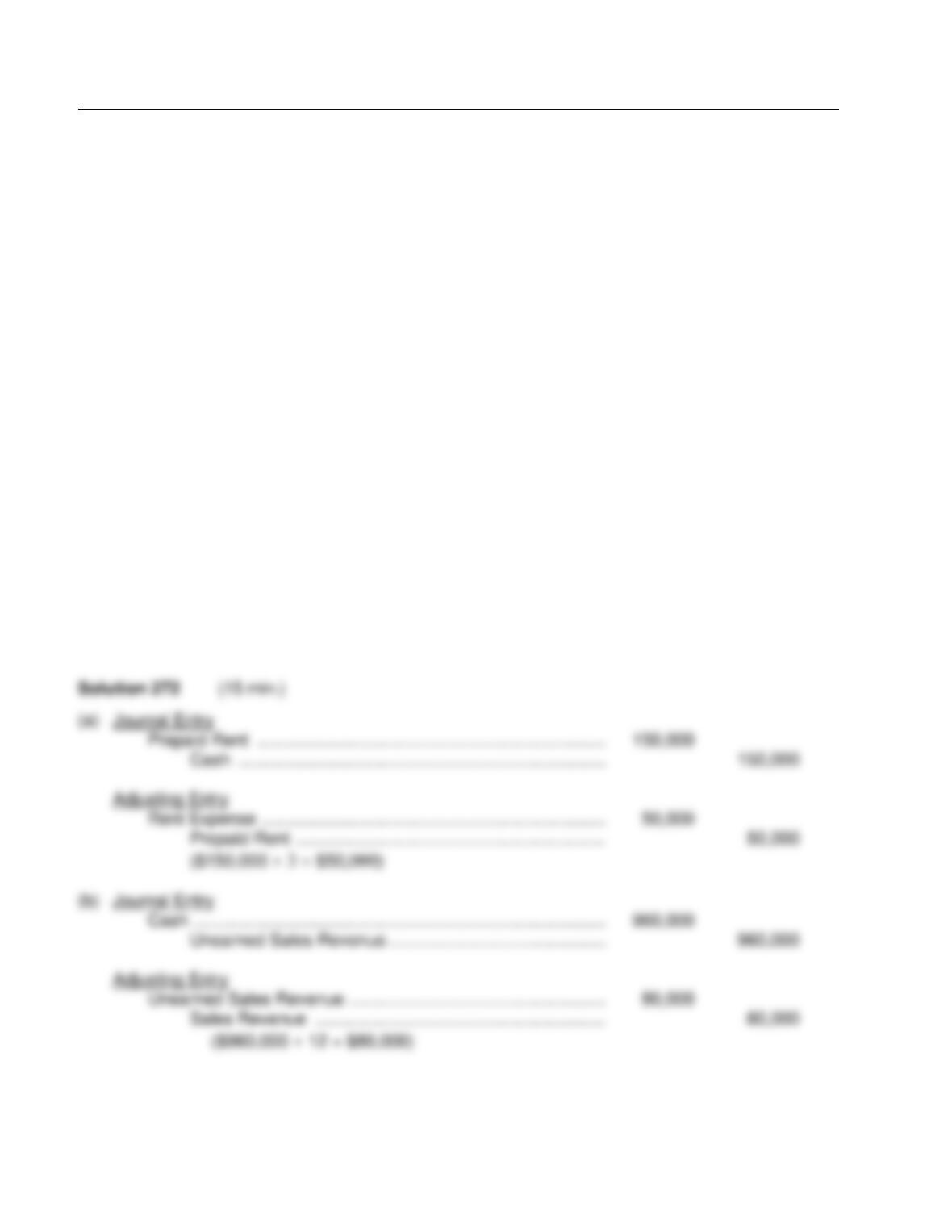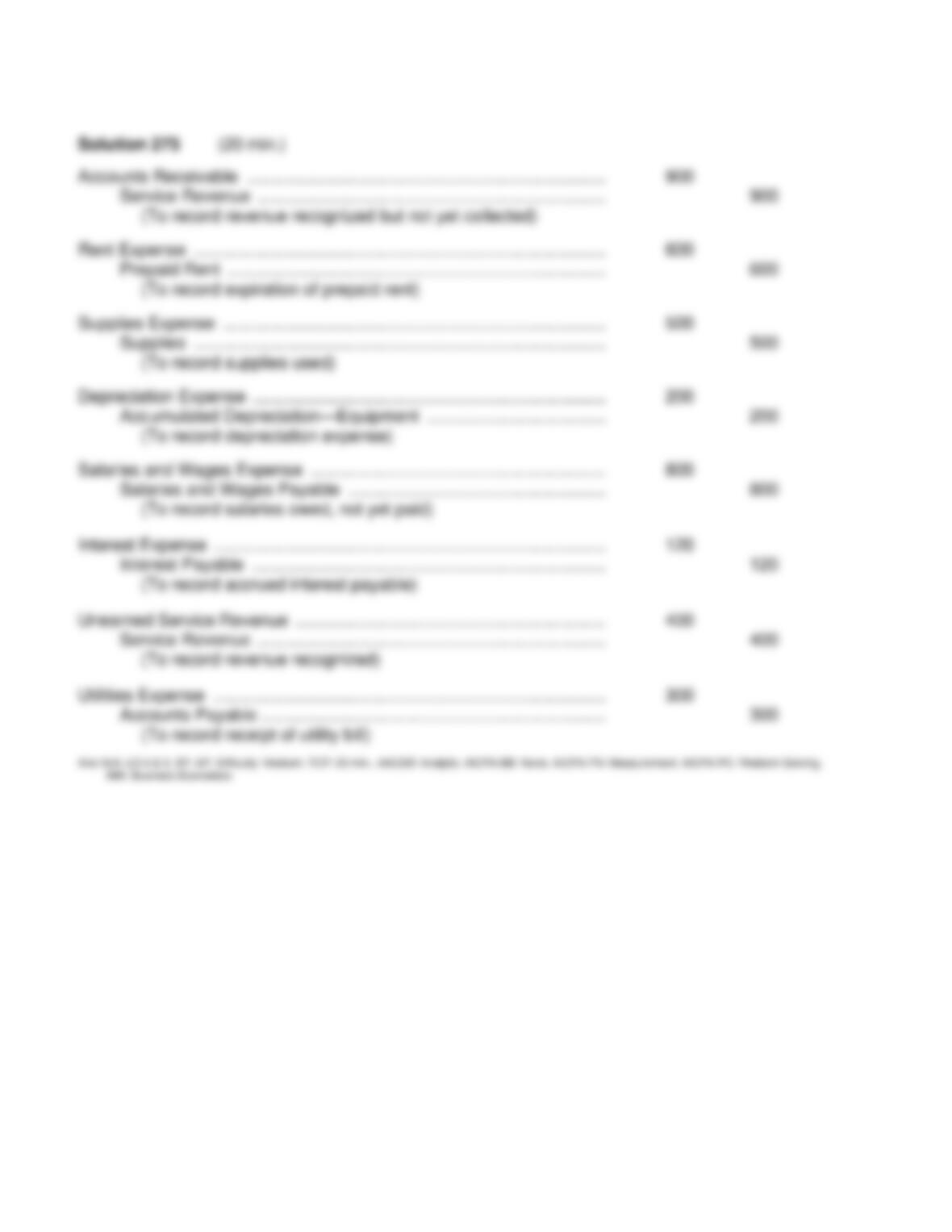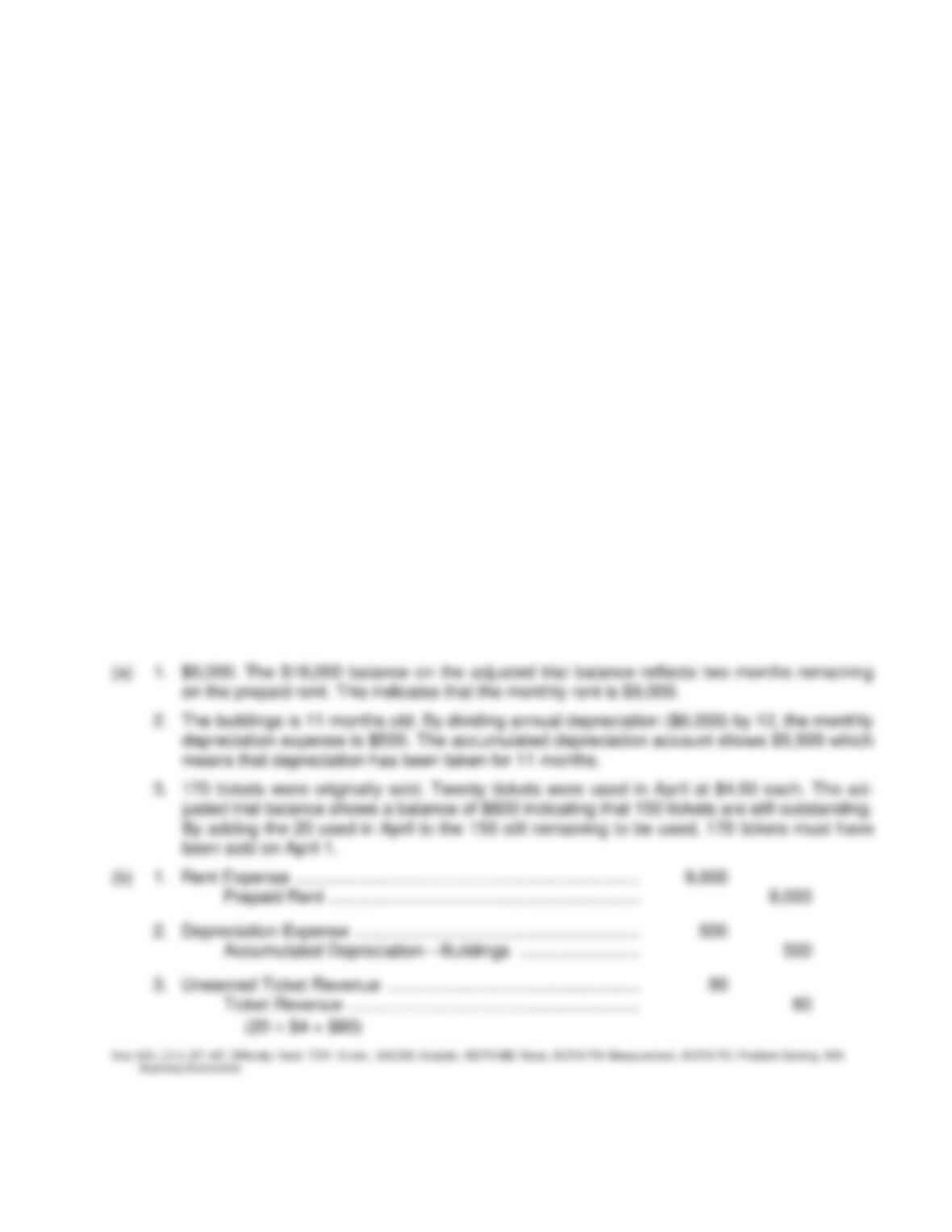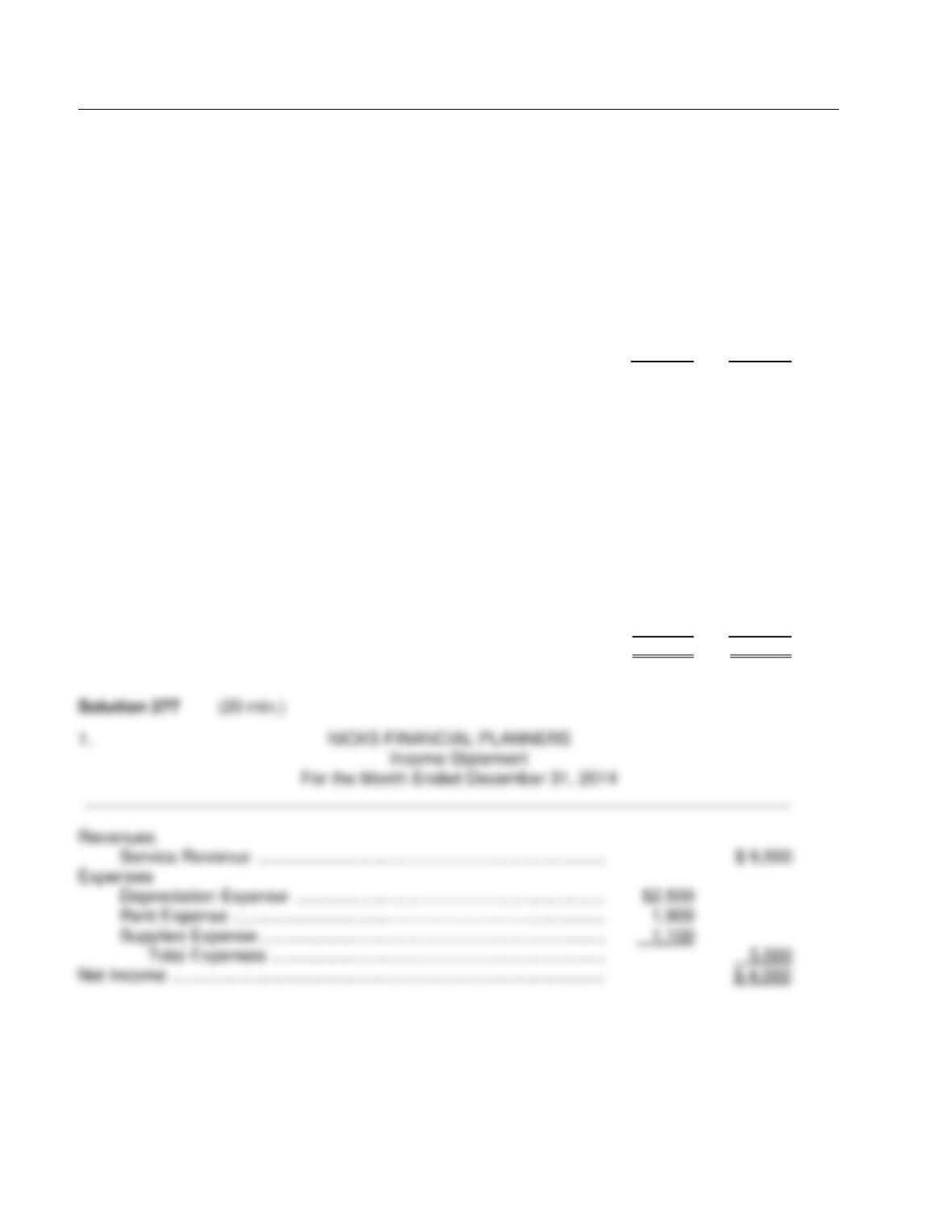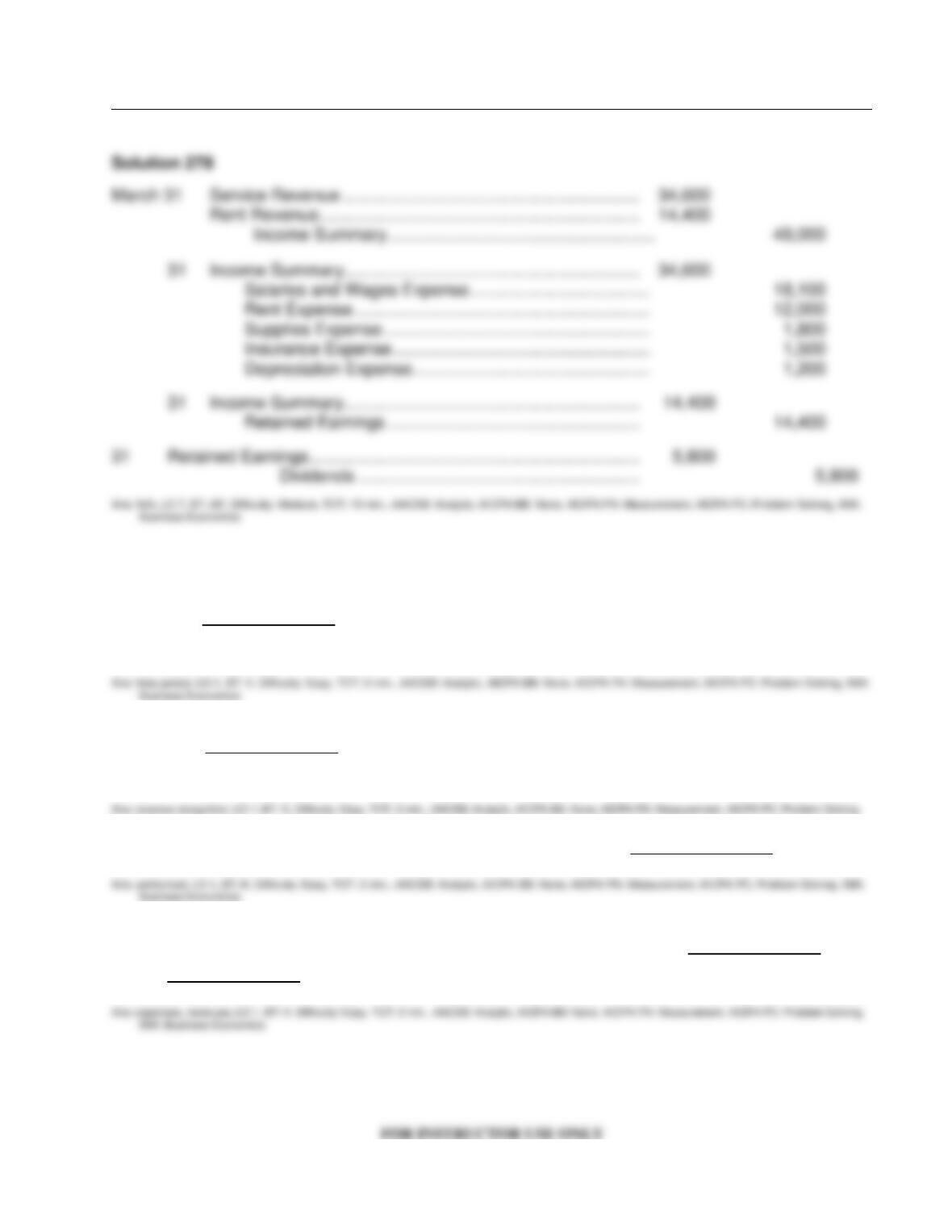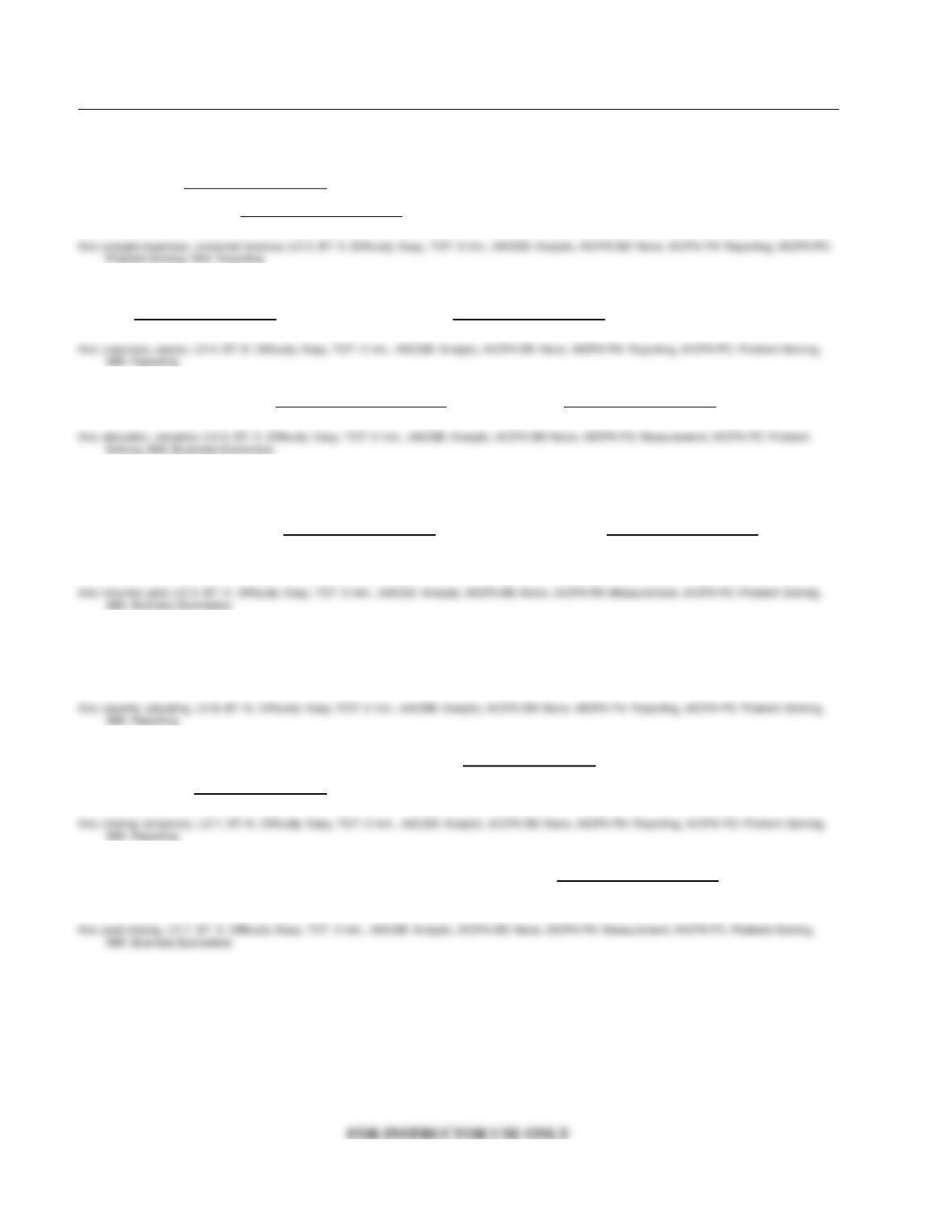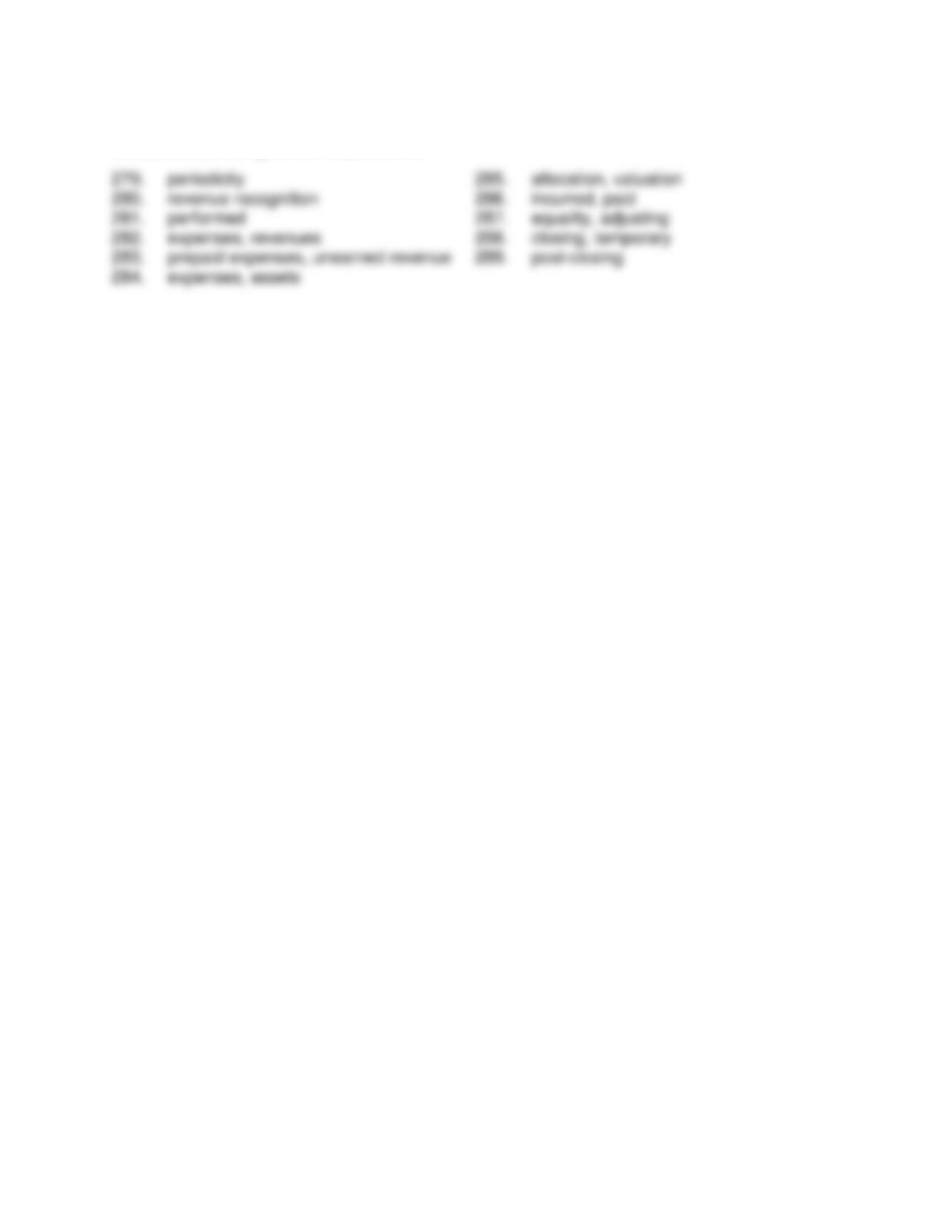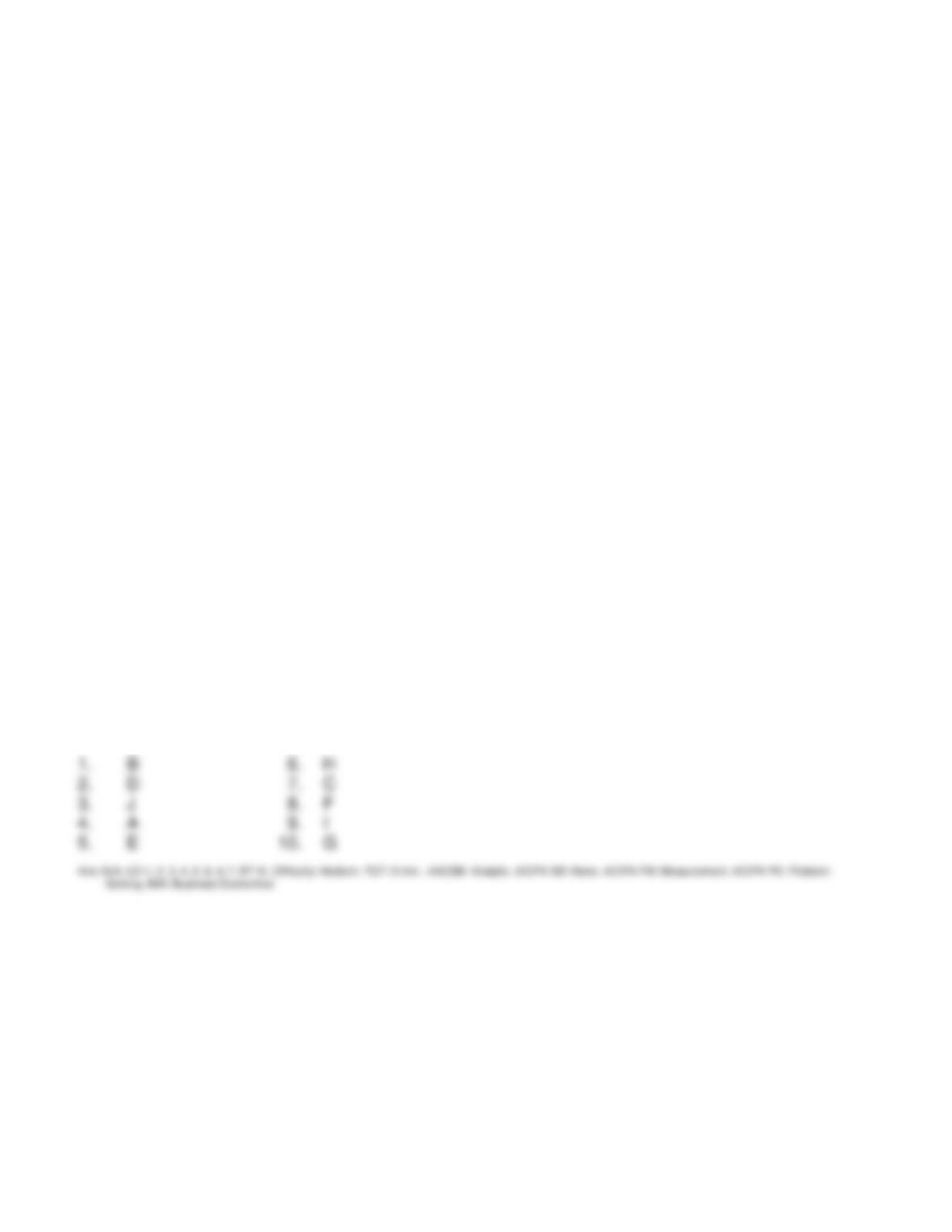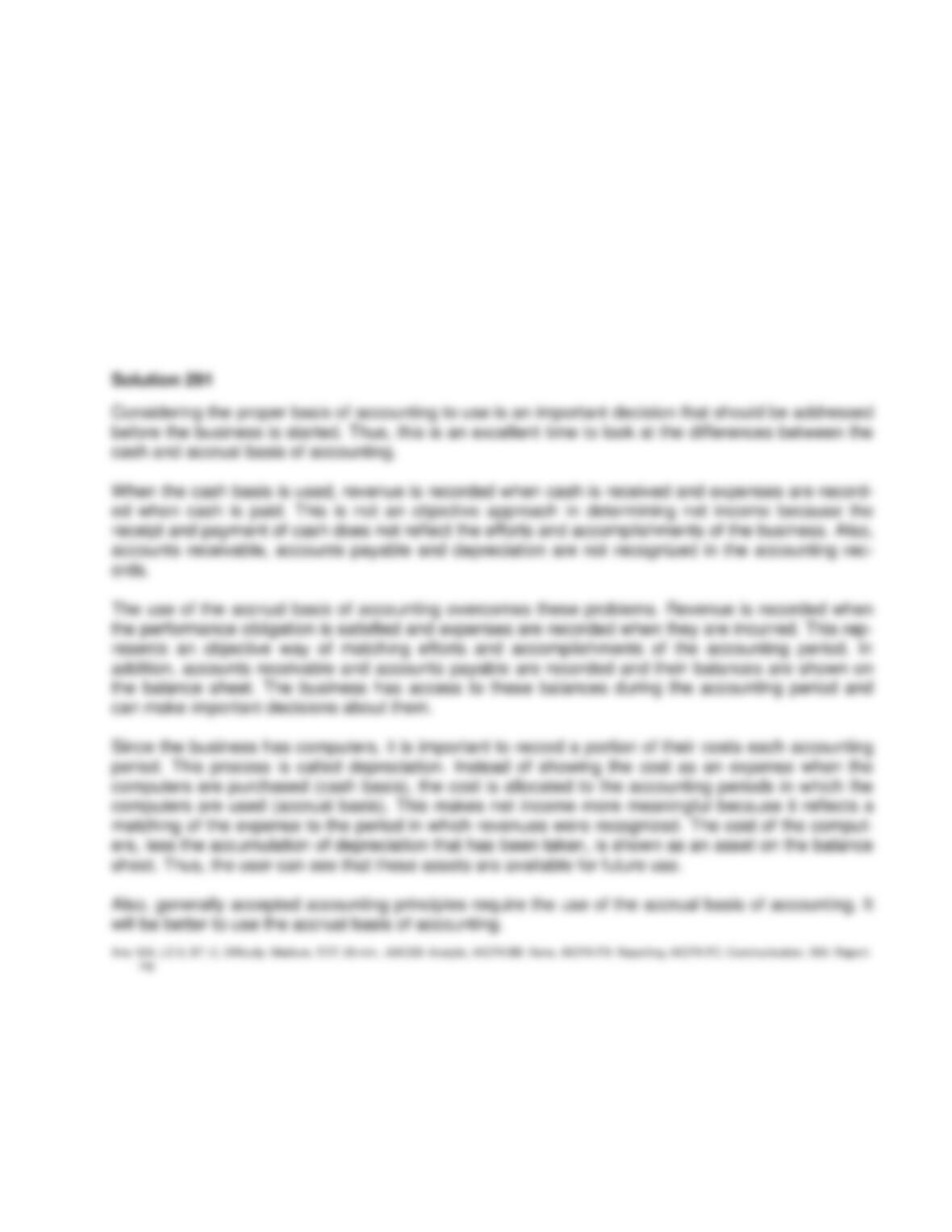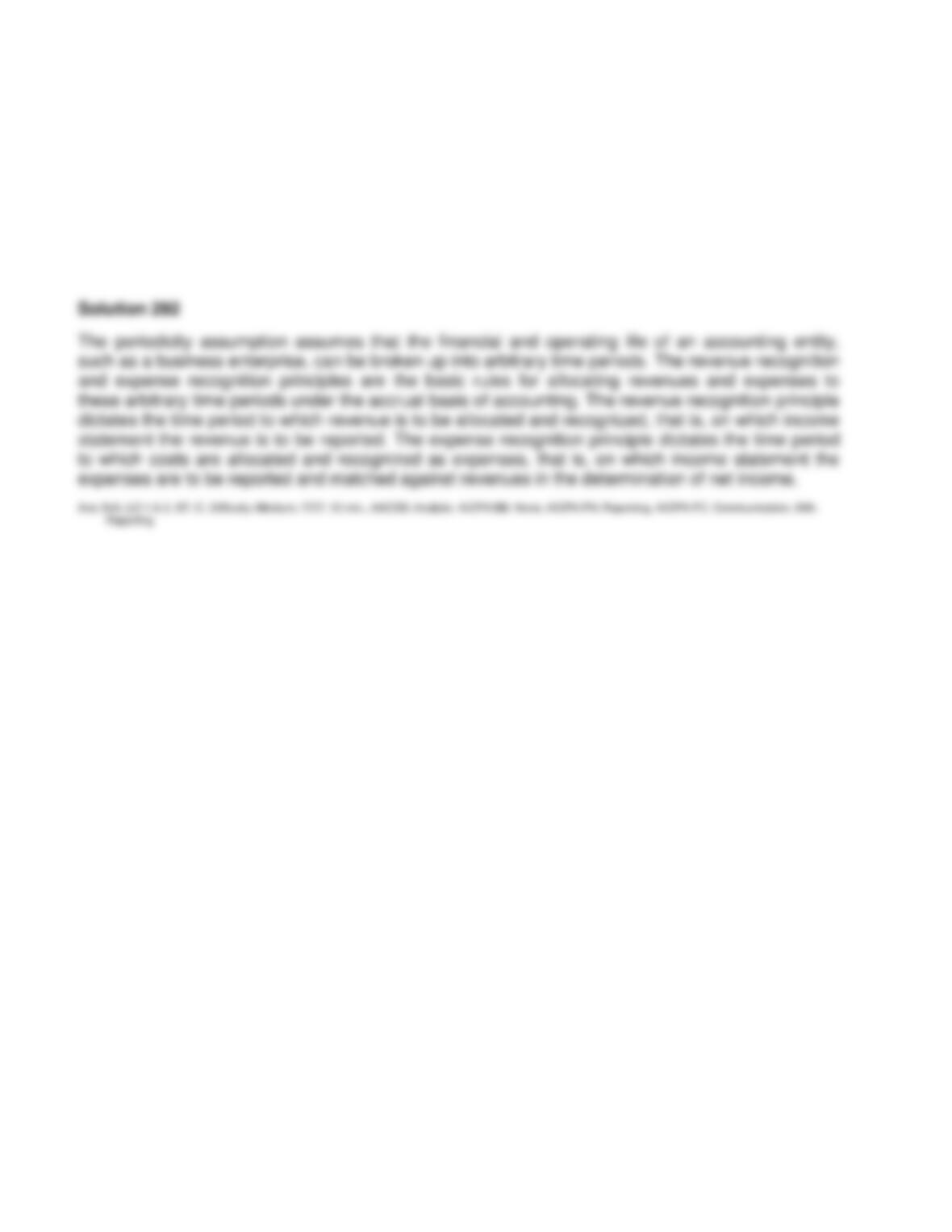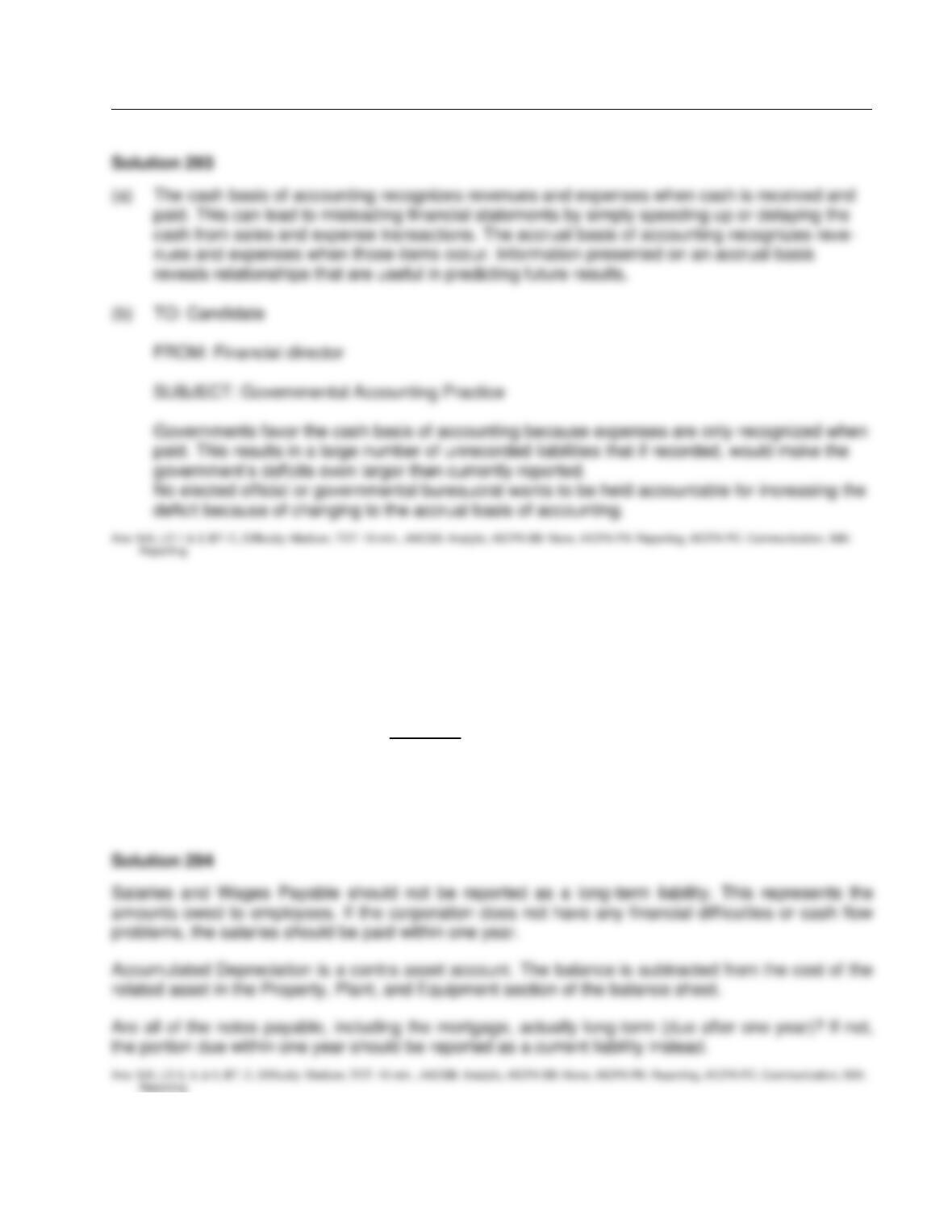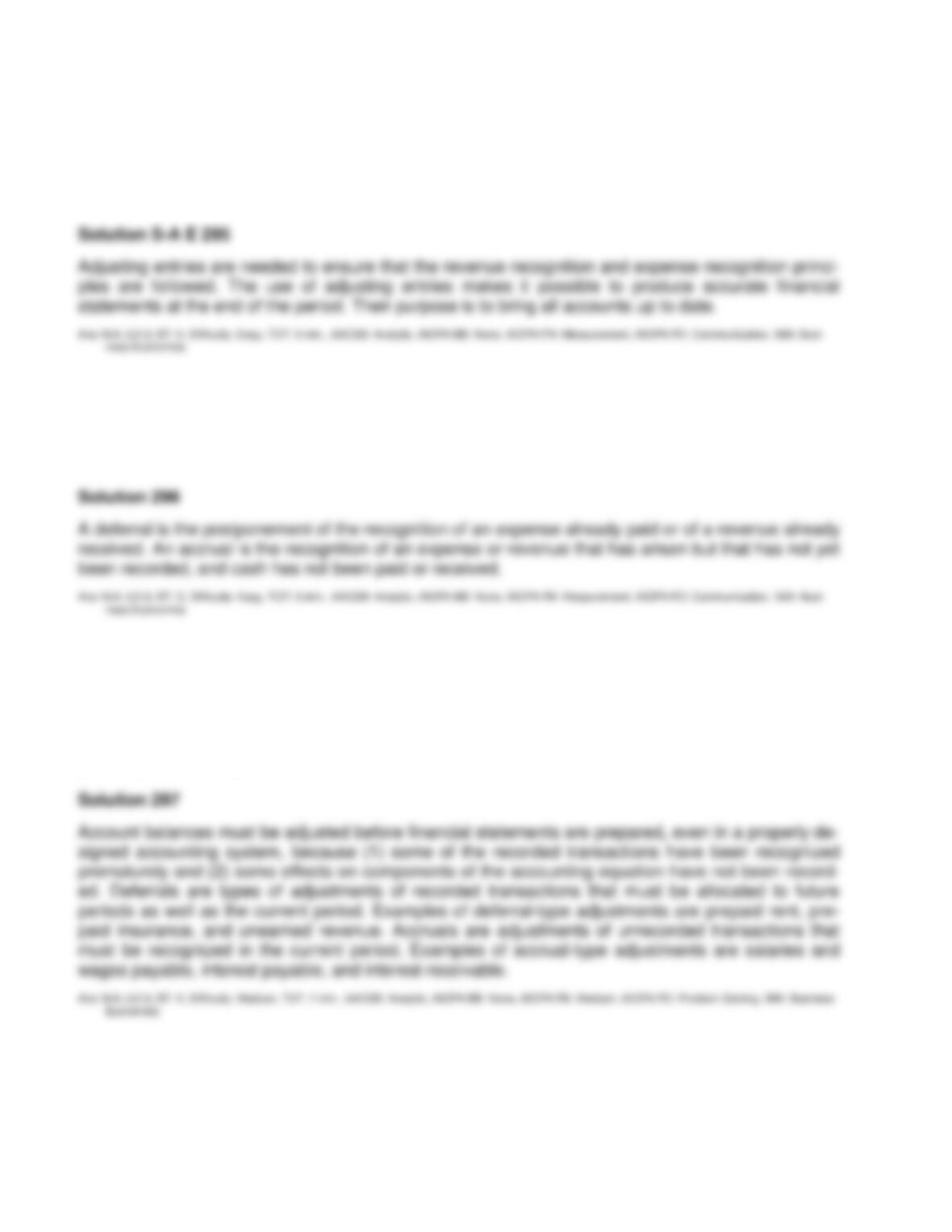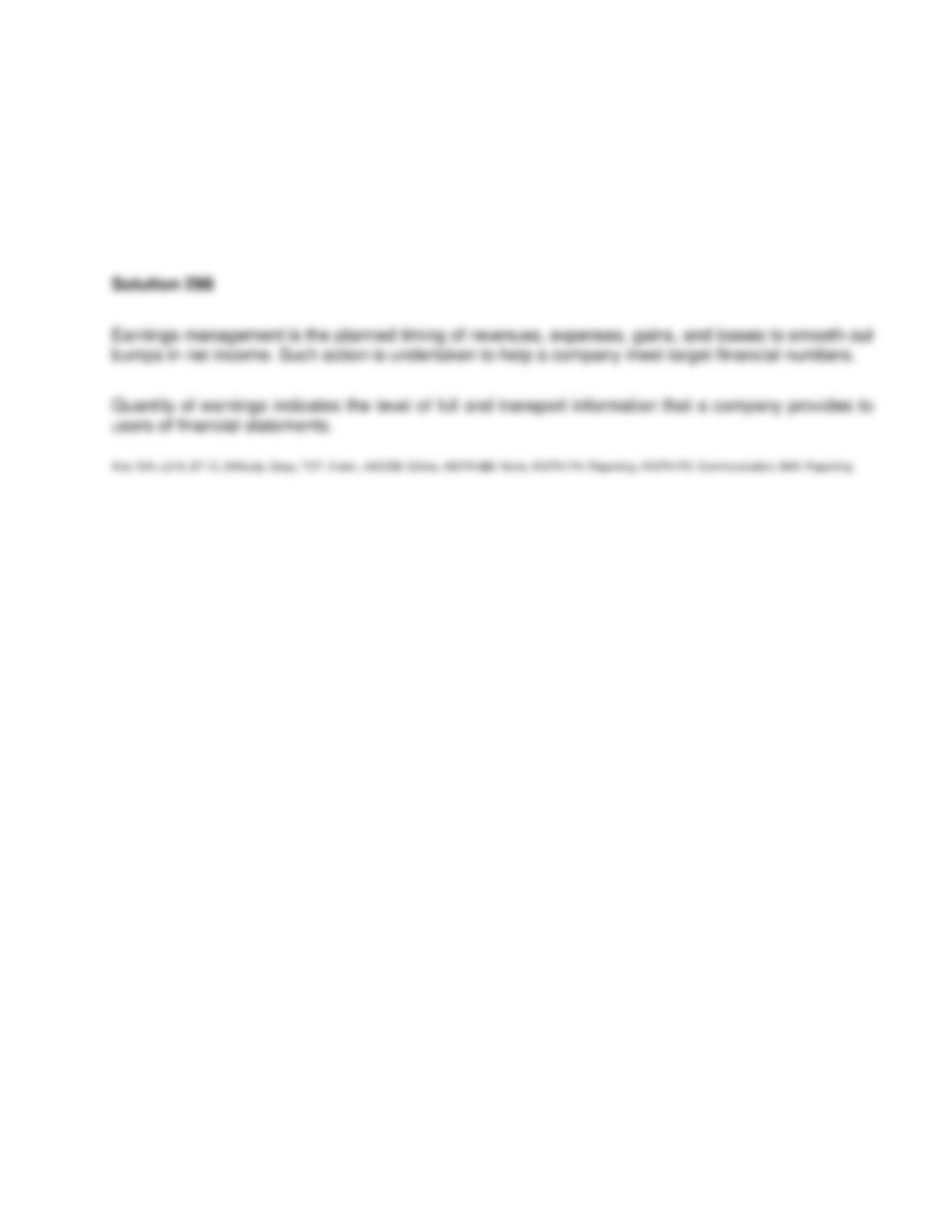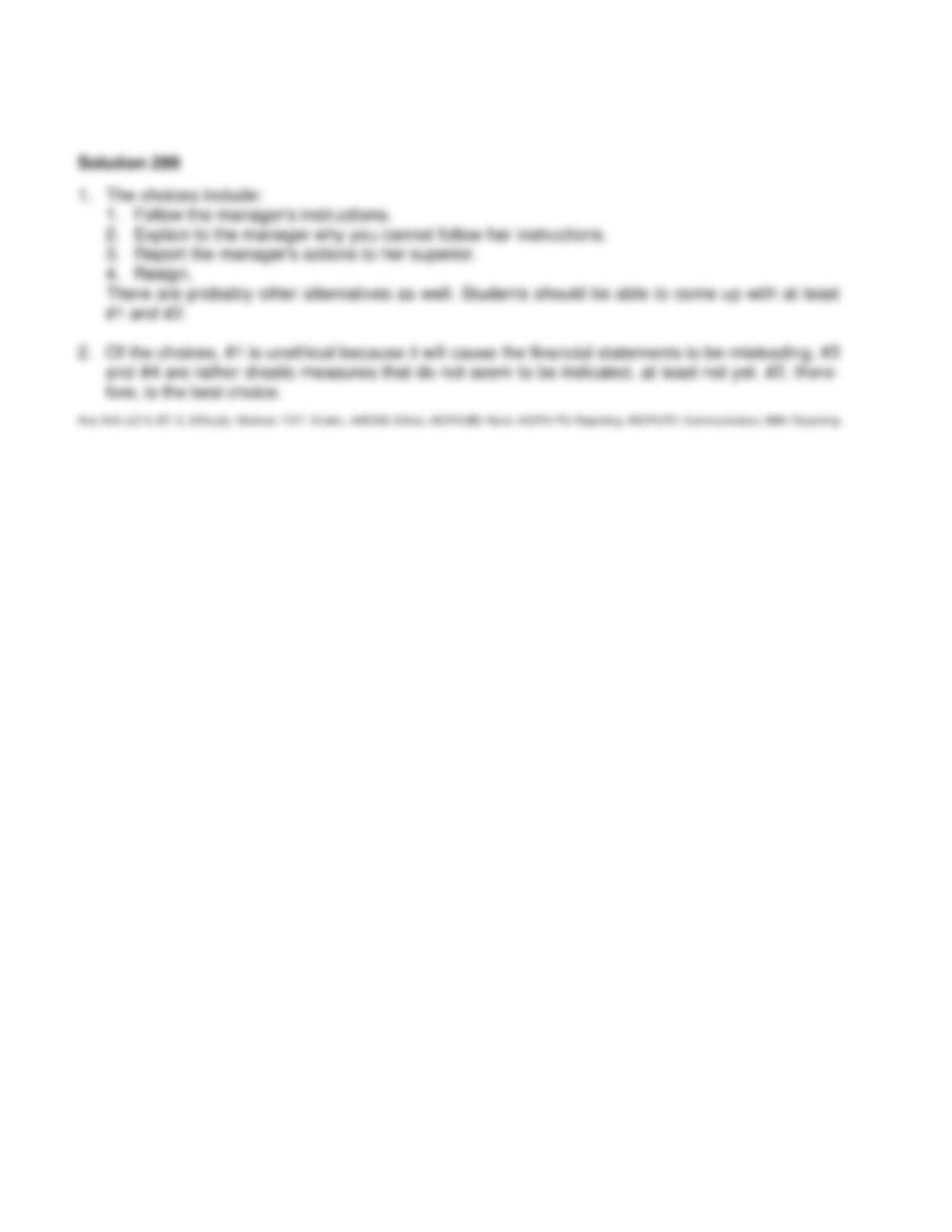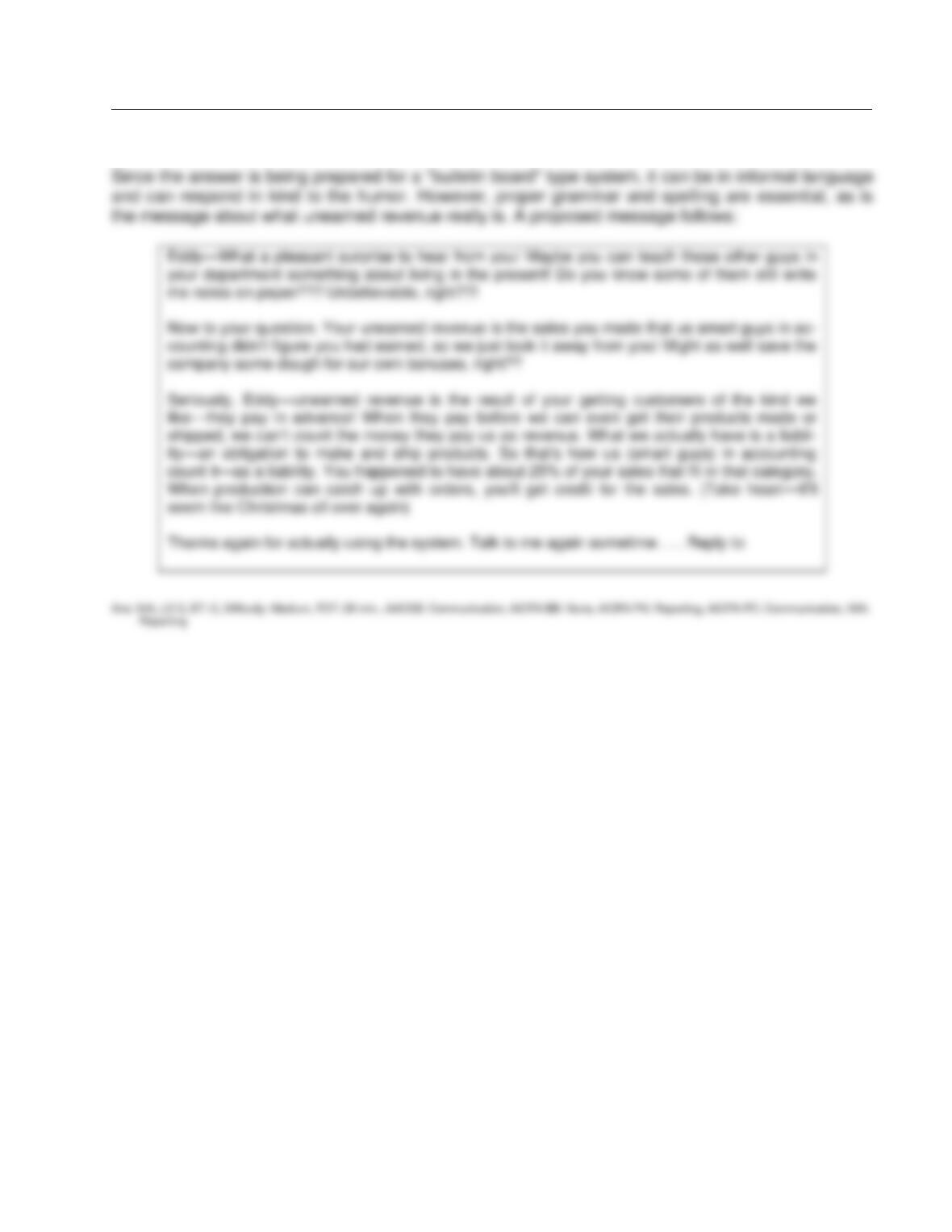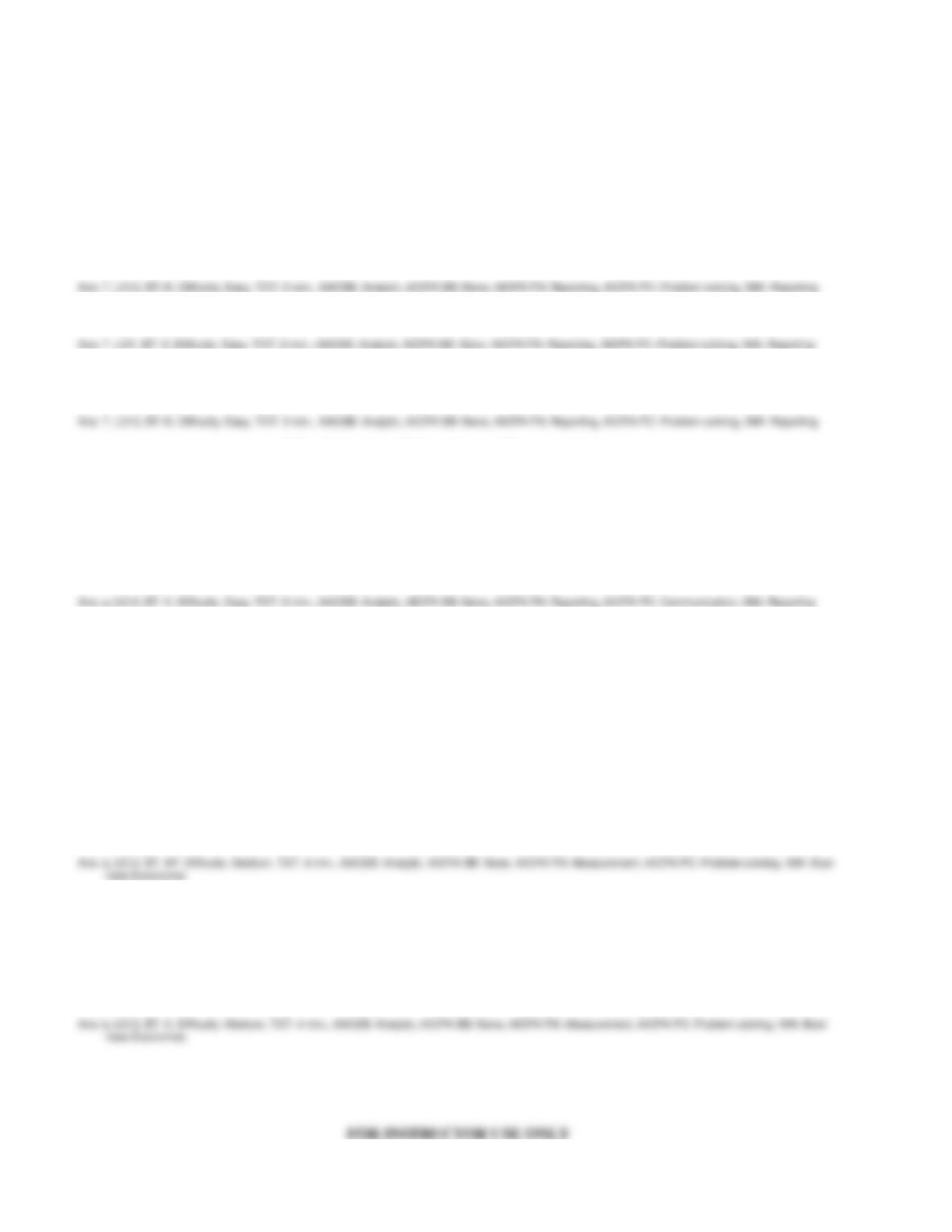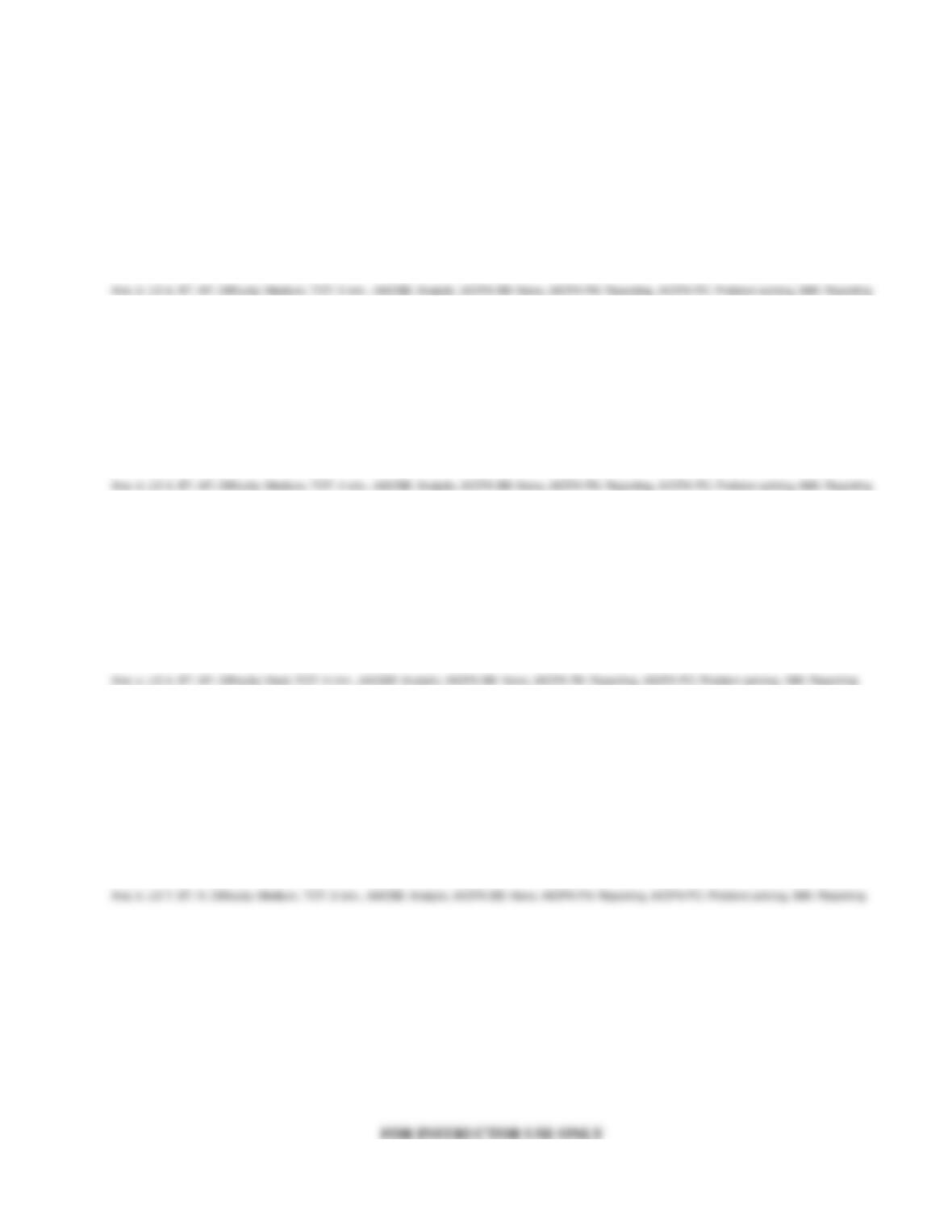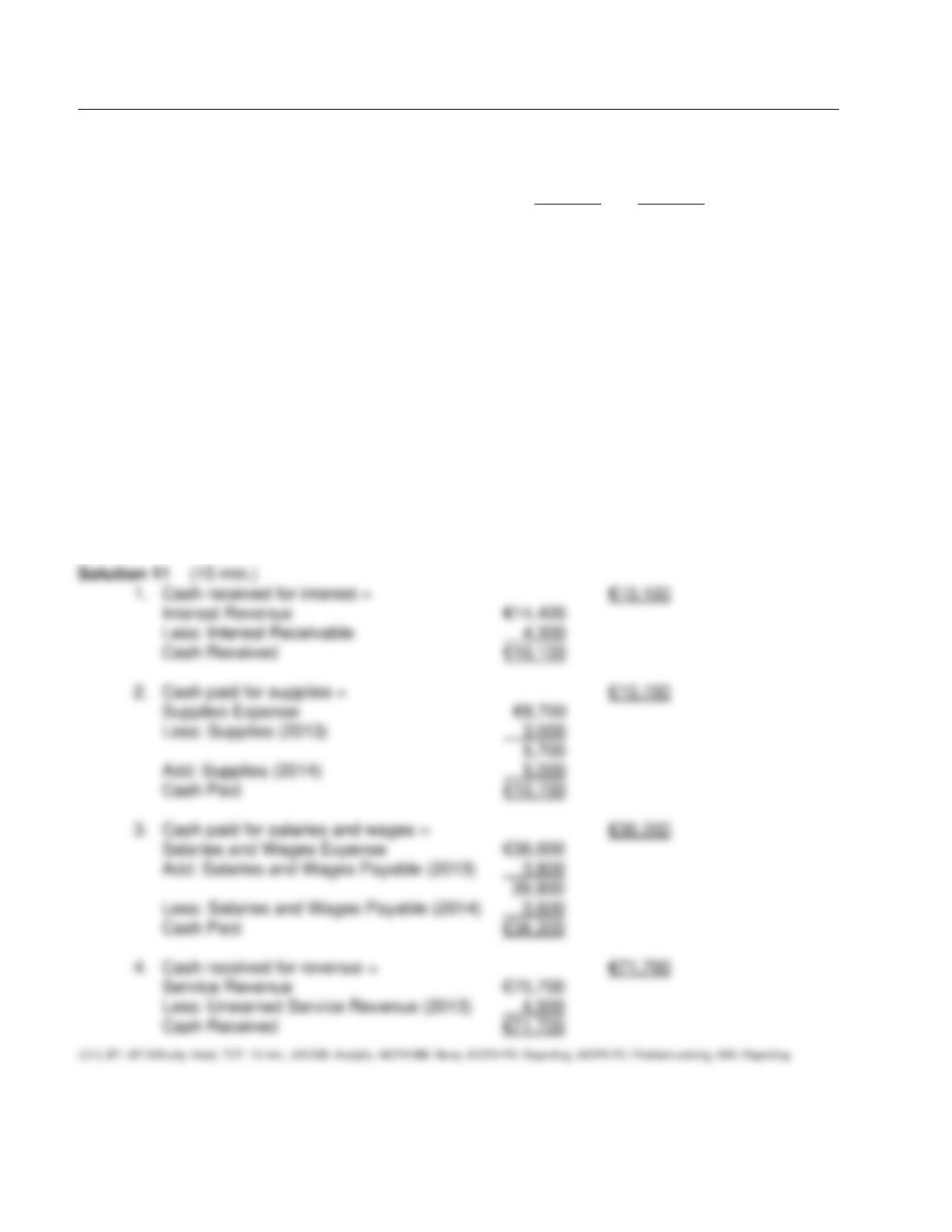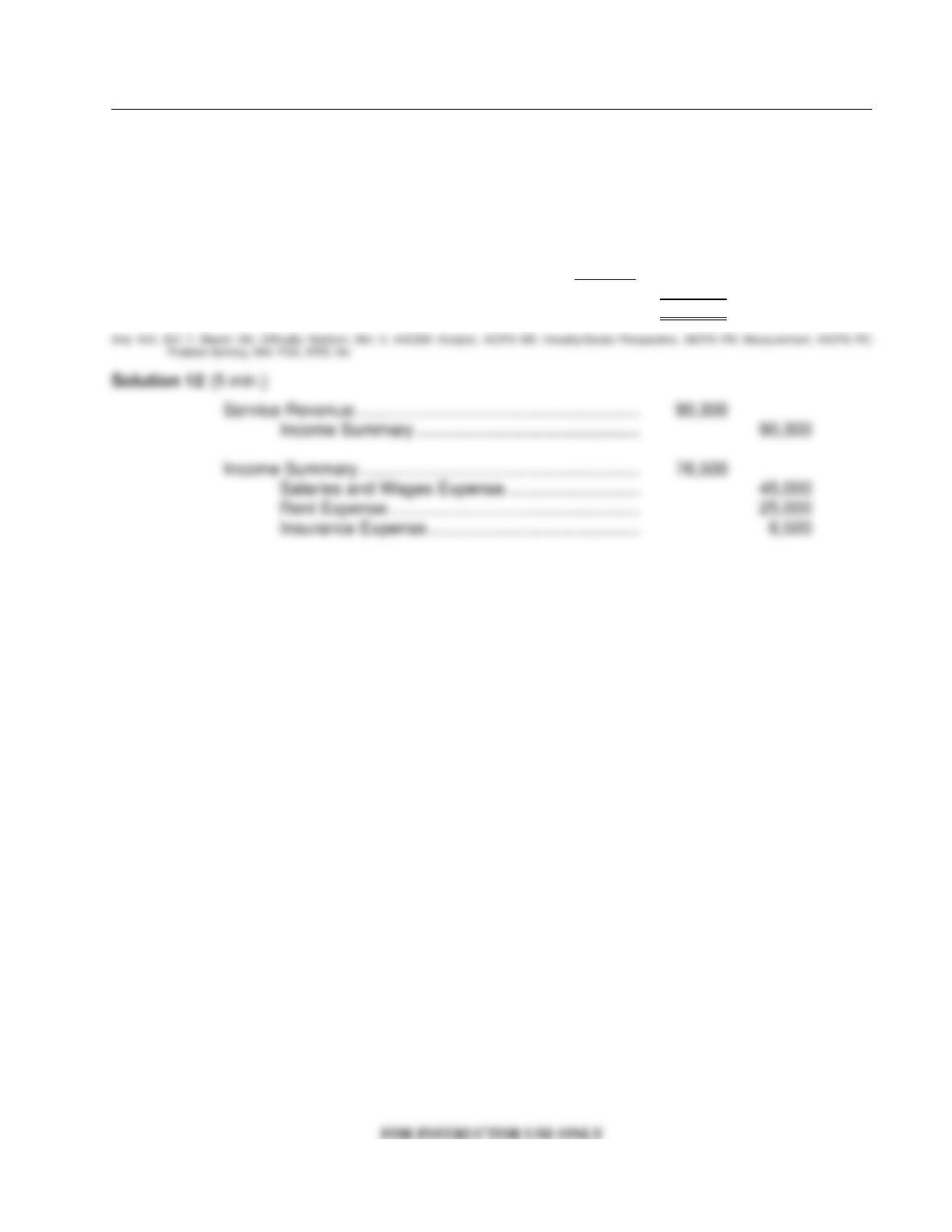CHAPTER LEARNING OBJECTIVES
1. Explain the revenue recognition principle and the expense recognition principle. The
revenue recognition principle dictates that companies recognize revenue when a performance
obligation has been satisfied. The expense recognition principle dictates that companies rec-
ognize expenses in the period when the company makes efforts to generate those revenues.
2. Differentiate between the cash basis and the accrual basis of accounting. Under the cash
basis, companies record events only in the periods in which the company receives or pays
cash. Accrual-based accounting means that companies record in the periods in which the
events occur, events that change a company's financial statements even if cash has not been
exchanged.
3. Explain why adjusting entries are needed, and identify the major types of adjusting en-
tries. Companies make adjusting entries at the end of an accounting period. These entries
ensure that companies record revenues in the period in which the performance obligation is
satisfied and that companies recognize expenses in the period in which they are incurred. The
major types of adjusting entries are prepaid expenses, unearned revenues, accrued revenues,
and accrued expenses.
4. Prepare adjusting entries for deferrals. Deferrals are either prepaid expenses or unearned
revenues. Companies make adjusting entries for deferrals at the statement date to record the
portion of the deferred item that represents the expense incurred or the revenue for services
performed in the current accounting period.
5. Prepare adjusting entries for accruals. Accruals are either accrued revenues or accrued
expenses. Adjusting entries for accruals record revenues earned and expenses incurred in the
current accounting period that have not been recognized through daily entries.
6. Describe the nature and purpose of the adjusted trial balance. An adjusted trial balance is
a trial balance that shows the balances of all accounts, including those that have been adjust-
ed, at the end of an accounting period. The purpose of an adjusted trial balance is to show the
effects of all financial events that have occurred during the accounting period.
7. Explain the purpose of closing entries. One purpose of closing entries is to transfer net in-
come or net loss for the period to Retained Earnings. A second purpose is to “zero-out” all
temporary accounts (revenue accounts, expense accounts, and Dividends) so that they start
each new period with a zero balance. To accomplish this, companies “close” all temporary ac-
counts at the end of an accounting period. They make separate entries to close revenues and
expenses to Income Summary, Income Summary to Retained Earnings, and Dividends to Re-
tained Earnings. Only temporary accounts are closed.
8. Describe the required steps in the accounting cycle. The required steps in the accounting
cycle are (a) analyze business transactions, (b) journalize the transactions, (c) post to ledger
accounts, (d) prepare a trial balance, (e) journalize and post adjusting entries, (f) prepare an
adjusted trial balance, (g) prepare financial statements, (h) journalize and post closing entries,
and (i) prepare a post-closing trial balance.

















































































